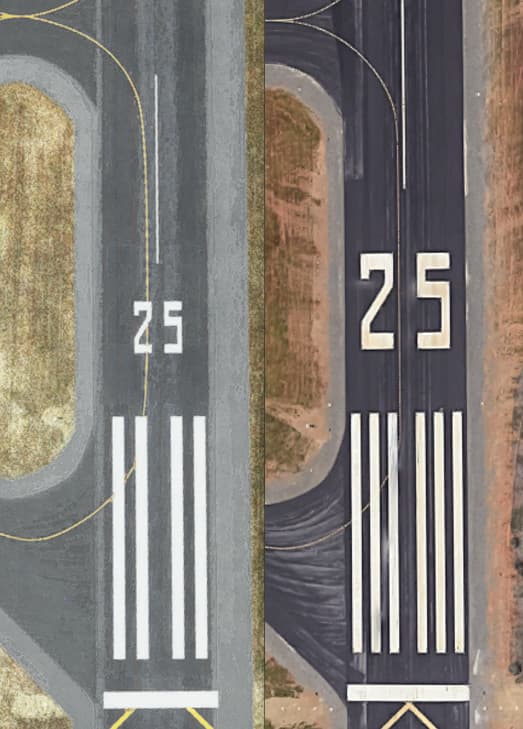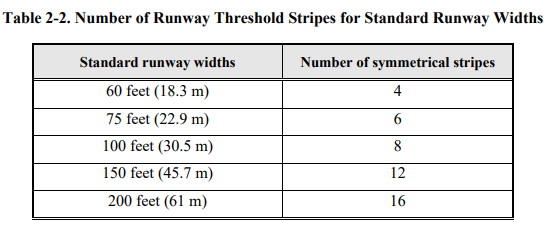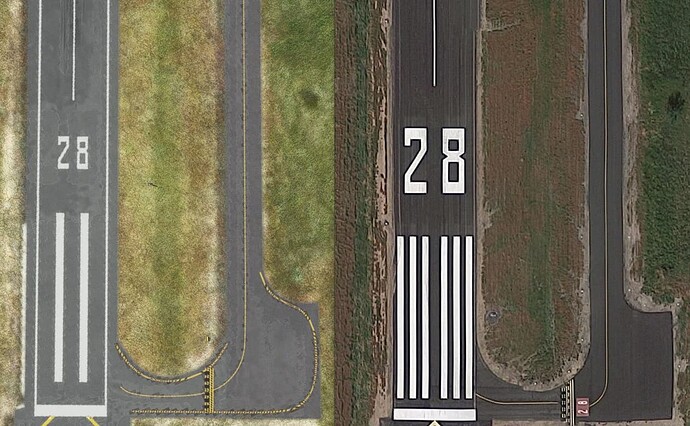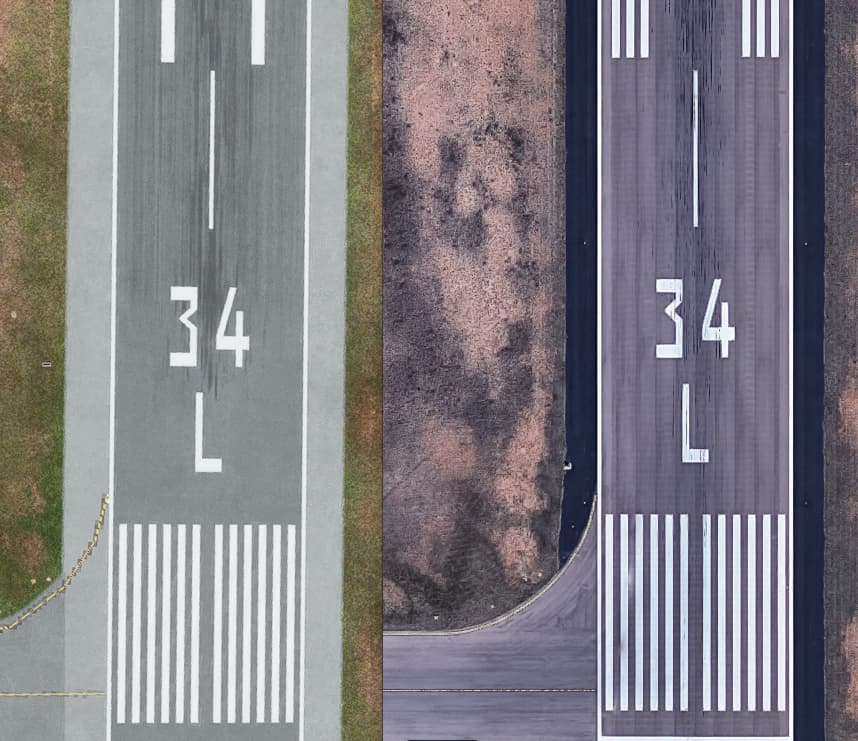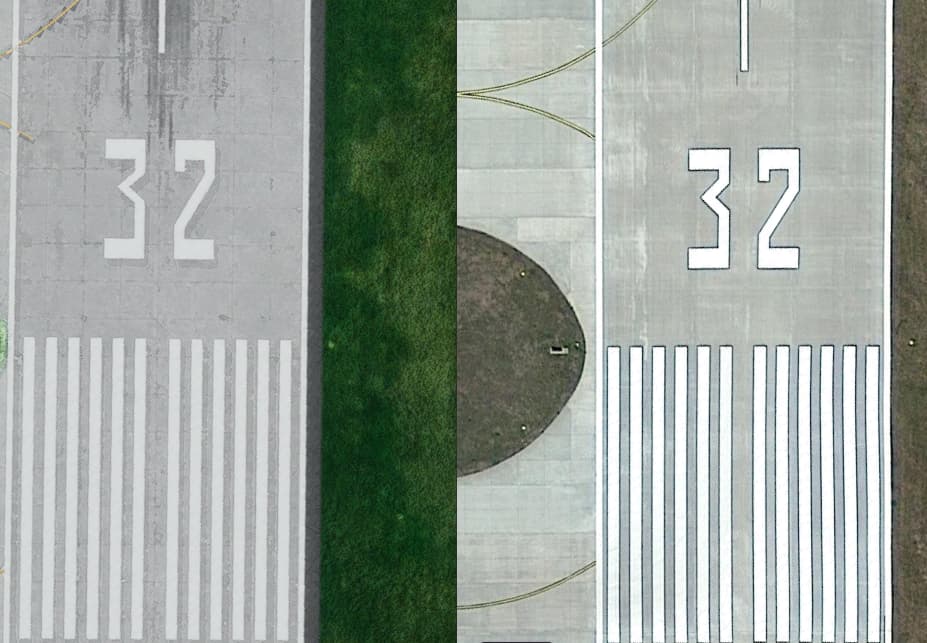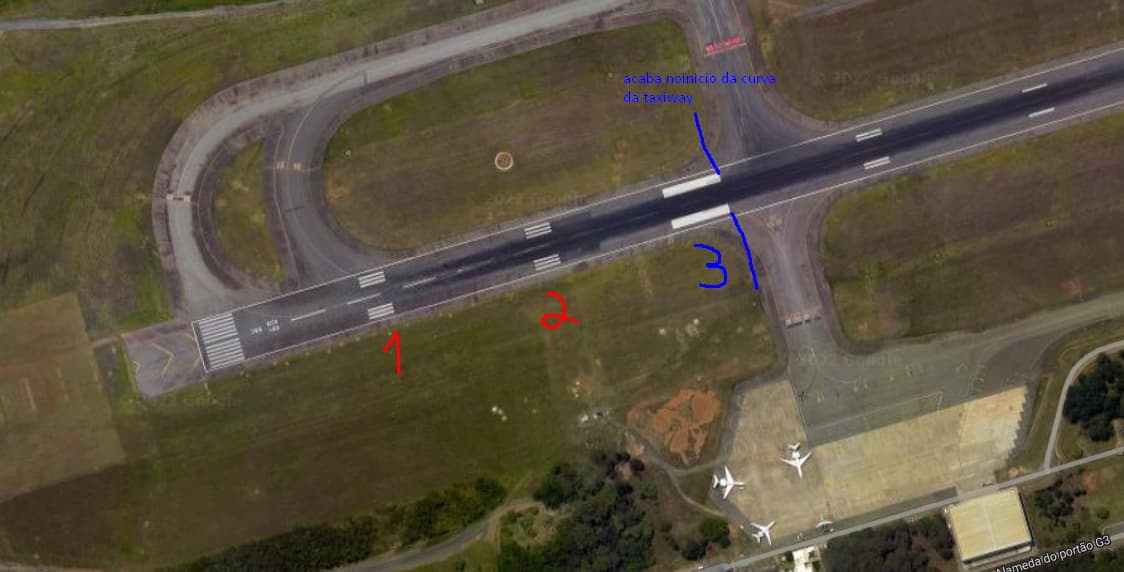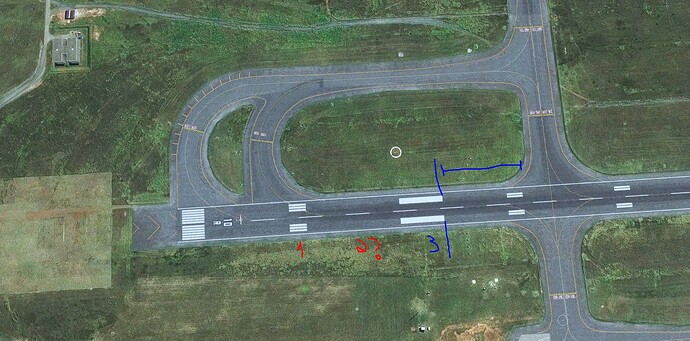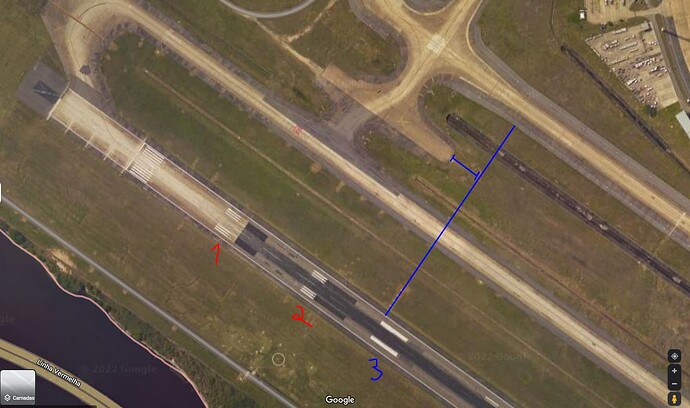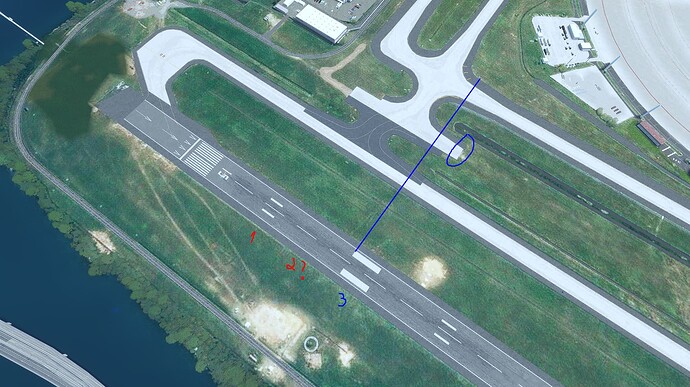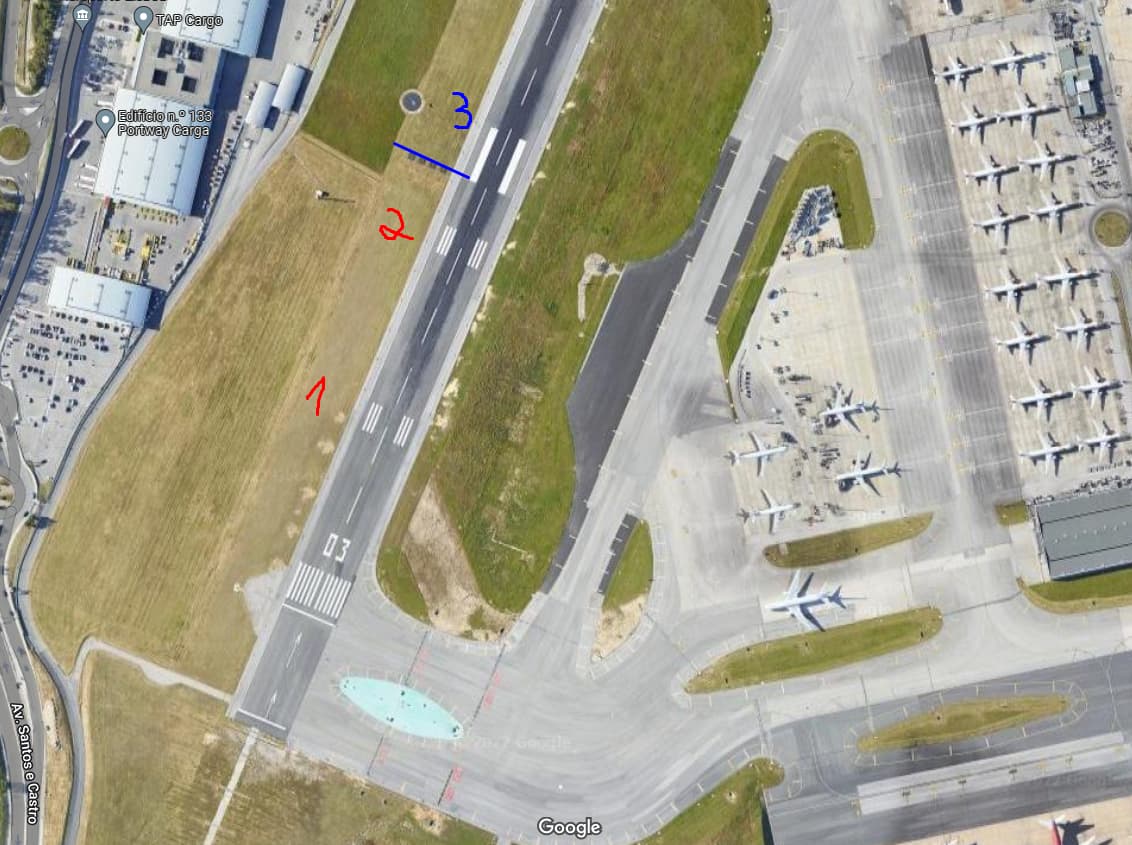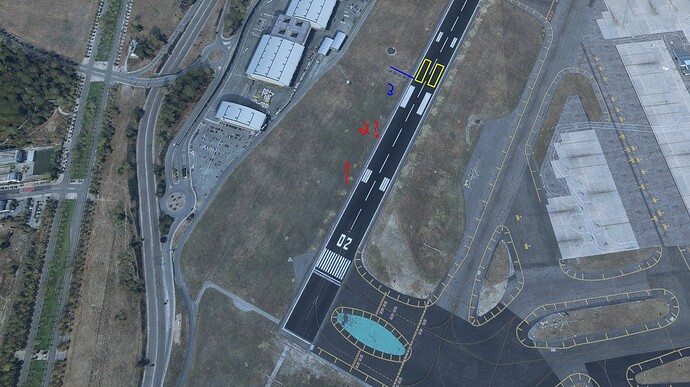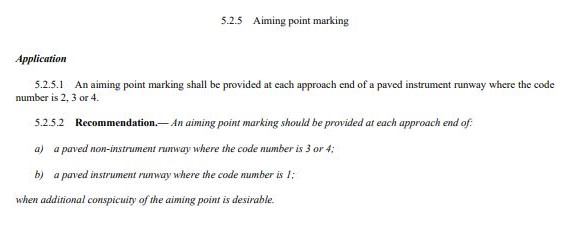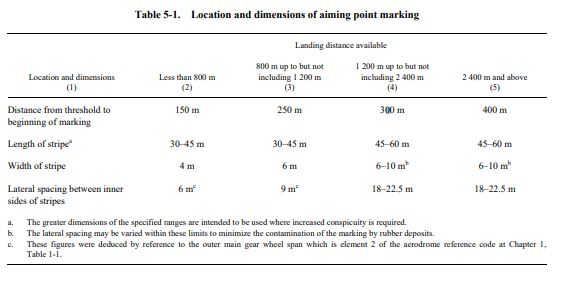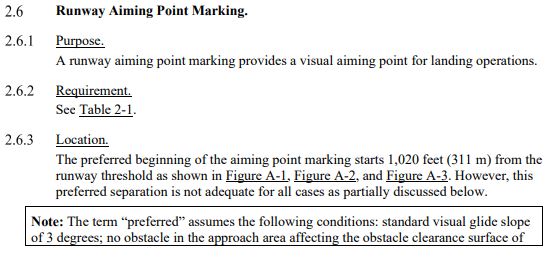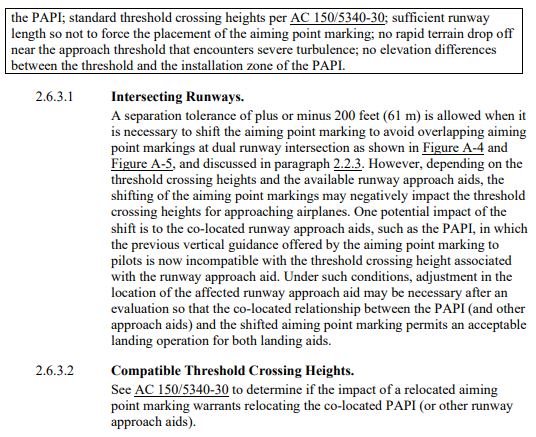Many of the runway markings are incorrect in the sim. This may seem trivial to some, but to people looking for immersion and realism, and those who are used to real-world application, it’s very noticeable. The incorrect markings can also lead to mis-identification of the runway environment and depth perception needed for landing.
Understandably, there are exceptions to these rules, on a case-by-case basis, but in general, the following errors are occurring in procedurally-generated (non-bespoke) airports:
-
Centerline stripes are too narrow. Standard minimum centerline stripe width should be 36" for precision runways, 18" for non-precision, and 12" for visual runways. The stripes in the sim are often set to 12" wide, even on precision runways.
-
Runway designators (numbers) are too small. Most designator numbers and letters should be 60’ tall (long). They should be shortened proportionately for narrower runways only in order to meet a minimum 2’ clearance from the runway edges. In the sim they seem to be about 1/2 the height they should be, most specifically on smaller, narrower runways. This makes it incredibly hard to identify the runway in many situations.Here is a side-by side, scaled image of Auburn Airport (KAUN) runway 25 - sim on the left, reality on the right. Note the correct runway number size at right.
-
Threshold bars are incorrectly quantified. The standard is pretty clear on this:
Here is a side-by-side, scaled comparison of Oakdale Airport (O27) runway 28 - sim left, reality right. We see only two threshold bars in the sim, when in reality there should be six for this 75’ wide runway. Also note the incorrect number size again, and the presence of edge markings in the sim.
-
500’ touchdown zone markings are incorrect. The 500’ TDZ in the sim is a single bar close to the centerline. In reality, it should be three bars on each side of the centerline. This is misapplied on almost all US airports that require them.Here is a side-by side, scaled image of Midland Airport (KMAF) runway 34L - sim on the left, reality on the right. Note the correct 500’ touchdown zone marking at right.
-
Runway marking borders are missing. All runway and taxiway markings (except runway/taxiway edge and rwy demarcation bars) on Portland Cement Concrete runways should have black borders to enhance contrast and visibility.Here is a side-by side, scaled image of Rapid City Regional Airport (KRAP) runway 32 - sim on the left, reality on the right. Note the black borders on the right.
My analysis was performed using Google Maps, facility databases, and FAA publications such as FAR/AIM, and Advisory Circular 150/5340-1M "Standard for Airport Markings (warning:PDF)." (Note my area of expertise is in US systems, not rest-of-world, but I’m sure those are worth a look as well).
